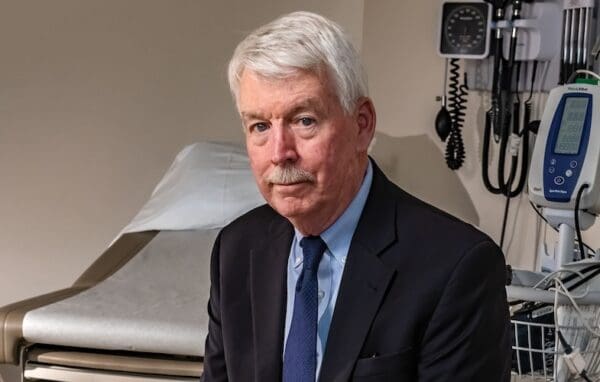
The Supreme Court's ruling in June 2024 dramatically undercut the authority of federal agencies while shifting the balance of power to the Court. Photo: Shutterstock
In the hurried closing days of its term, the U.S. Supreme Court issued a ruling that dramatically undercut the latitude of federal agencies to protect the public while shifting even more power from Congress to the Court’s anti-environmental majority.
For over 40 years, federal courts have followed the principle (dubbed “Chevron deference” for the case in which it was first articulated) that when laws passed by Congress are ambiguous, courts should defer to the agency Congress charged with administering the statute as long as its interpretation is reasonable.
Practically, this made sense. Congress often drafts statutes in broad terms so that agencies can address new and unanticipated issues and craft innovative solutions in a fast-moving world. Neither legislators nor judges boast detailed knowledge or practical experience in specialized areas such as the environment, education, civil rights, financial markets, consumer protection, transportation, health care, and worker safety. It also made sense institutionally because judges are not accountable to the voting public, unlike the President (who oversees federal agencies) and Congress.
This principle gave federal agencies like the Food and Drug Administration, the Labor Department, the Bureau of Consumer Protection, and the Environmental Protection Agency flexibility to institute a multitude of laws touching each of our lives in fundamental ways – the purity of the air we breathe, the water we drink, the food we eat, the products we use, the safety of the cars we drive and the planes we fly in and much more.
Notably, Chevron deference was never a product of ‘liberal’ or ‘activist’ thinking. Its adherents included judges across the ideological spectrum, including conservative icons like Associate Supreme Court Justice Antonin Scalia. So, it hasn’t always worked to benefit public health and the environment. Indeed, the namesake decision announcing the doctrine, Chevron v. Natural Resources Defense Council, was one in which an oil company and Ronald Reagan’s anti-regulatory agenda won, the environmental side lost, and more air pollution resulted. Courts could be erratic in applying the doctrine, and outcome-driven courts set on invalidating an agency rule, ignored Chevron’s dictates, or cited it while not actually following it. But apart from anti-regulatory extremists, it was a version of judicial restraint that created common ground among the vast majority of courts and thus provided a measure of predictability to agencies and the public.
Ignoring Long-Standing Logic
By eliminating Chevron deference in the cases of Loper Bright Enterprises v. Raimondo and Relentless Inc. v. Department of Commerce, the Court has wiped away decades of precedent
that has allowed federal agencies to issue rules protecting consumers, workers, and the environment while avoiding endless litigation about the scope of the agency’s authority.
In so doing, the Court has introduced a significant measure of uncertainty for agencies and the public and effectively rebalanced our federal system. From this point forward, federal agencies’ efforts to issue well-informed laws based on scientific and technical expertise will be second-guessed by the courts. Agencies doing their best to interpret new charges from Congress will operate in a vacuum, hoping their efforts to effectuate new public protections survive the virtually assured judicial challenge. And that means those challenging the regulations that keep us safe – typically corporations seeking to avoid responsibility for pollution and health burdens on the public – can shop around for sympathetic judges in a politicized judiciary. To avoid this kind of scenario, Congress would have to issue a flurry of much more specific laws. Considering the gridlock and division that has existed in Congress for years, this provides little comfort.
Despite many pages of explanation, the Court’s rationale in Loper is as spurious as it is damaging. According to the decision’s author, Chief Justice John Roberts, the thousands of judges and justices (including Justice Scalia) who applied Chevron deference in thousands upon thousands of cases for over 40 years somehow missed that the doctrine cannot be ”squared” with the statutory language of the Administrative Procedures Act. I have many beefs with Justice Scalia’s jurisprudence under that law, but the notion that he (and legions of other judges) somehow missed an issue that Roberts was clever enough to spot is facetious, at best.
The Environment and Climate in a Post-Chevron World
The likely repercussions of the Court’s rulings in Loper and Relentless are considerable, raising questions about the federal agencies’ ability to provide essential public health and environmental protections. The Clean Air and Clean Water Acts have helped protect our air and water from pollution for half a century. Rules around discharges from wastewater treatment plants, light and heavy-duty vehicle emissions, and fossil fuel power plant emissions, among many others, protect our and the planet’s health.
With this week’s ruling, it is frighteningly clear that these kinds of federal regulations will be increasingly second-guessed by courts. Against this backdrop, state advocacy and action will be of even greater importance in filling the gaps and overcoming the headwinds that Loper will amplify. That’s where CLF has unequaled capacity and has had unsurpassed success. CLF’s state law litigation and advocacy for regulation of toxic “forever chemical” (PFAS) in drinking water long preceded, and were necessary to spur, very recent federal standards. As EPA climate rules languished or were invalidated in federal courts, CLF helped secure strong state laws, including global warming solutions acts in five New England states, which limit carbon emissions to rein in climate change – something Congress and EPA have so far been unable to do. We’ve built our reputation fighting for our environment and communities, including going to court to enforce those state laws when necessary. Indeed, we’re doing that right now as we take the Maine Department of Environmental Protection to court for failing to follow its climate law.
As we assess what we can expect tomorrow, we have never been more resolved to fight for the strongest possible protections for our health, environment, and climate across the states as well as under federal law. We will fight for the thriving New England we cherish today and the future we owe to the generations of tomorrow.



